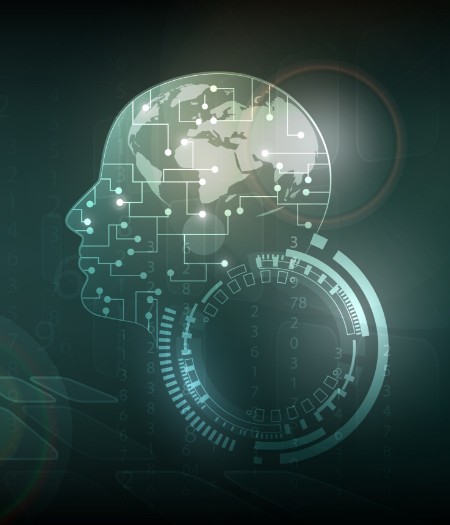The integration of artificial intelligence (AI) in the workplace signifies a shift toward augmented human performance in which automation complements rather than replaces human labor. Harvard Business School professor Karim Lakhani sums it up: "AI is not going to replace humans, but humans with AI are going to replace humans without AI." Partial automation is becoming the norm, enhancing human capabilities and efficiency.
This evolution isn't just about automating routine tasks but also about leveraging AI to augment human intelligence, creativity and decision-making processes. As machines take on more automatable activities, humans are freed to focus on higher-value work, fostering innovation and driving business growth.
But what, exactly, does that look like? In the age of AI, demand for new skills and roles such as data scientists, digital transformation specialists, big data specialists and business intelligence analysts is expected to rise sharply. But what about other areas, such as marketing and IT support, in which routine tasks are already outsourced to AI? This shift underscores the importance of reskilling and upskilling initiatives as workers transition from declining occupations to emerging ones.
Embracing AI and automation is beyond mere technological adoption—it's about preparing the workforce for the future, ensuring that employees are equipped to work alongside increasingly capable machines. By prioritizing the human touch in AI adoption, businesses can harness the power of technology to enhance, rather than replace, the workforce, creating a more dynamic, innovative, efficient and competitive future.
How Professionals Are Reshaping Their Roles With AI
IT support agents, to give one example of a role already intertwined with AI, are leveraging AI to transform the way they manage and resolve issues. Through AI-powered information retrieval and artifact generation, these professionals can analyze device and application data, knowledge-base articles and known issues more efficiently. AI facilitates dynamic insight generation and summarization, improving troubleshooting by correlating key information and providing step-by-step guidance to accelerate the resolution process. Through implementing low- and zero-touch remote automation-based remediations, IT support agents can significantly reduce their manual workloads (which includes the actual resolution) while improving the quality of support they provide.
Marketing professionals are also harnessing the power of AI to gain a competitive edge. By utilizing AI to collect market research data and identify trends and outliers, they can develop more informed, effective marketing strategies. AI assists in drafting marketing plans, pitchdecks that highlight product features, promotional emails, videos and social media posts, streamlining the content creation process. This enables marketers to focus more on creative and strategic tasks.
Similarly, HR professionals are using AI to transform the human resources function within organizations. Streamlined automated workflows powered by AI boost enterprise HR productivity by efficiently managing employee journeys. This includes tracking employee requests and cases and providing easy access to HR resources and information. AI can also help reduce biases in the hiring process by anonymizing resumes, analyzing job descriptions for biased language and ensuring diverse candidate pools by reaching out to a wide range of backgrounds. Hiring teams can use AI's predictive analytics to identify and rectify patterns of bias in historical hiring data and standardize the questioning process to minimize personal biases.
In each of these use cases, the narrative is clear: AI isn't a replacement for human workers but a powerful ally that supports and enhances their capabilities. The importance of human involvement remains paramount, as it's the insights, creativity and strategic thinking of professionals that prompt AI, review its outputs and guide its responses to ensure relevance and accuracy.
With AI handling routine and data-intensive tasks, employees are freed to focus on more complex, creative and strategic aspects of their roles, leading to a more empowered and fulfilled workforce. This empowerment can result in increased productivity, engagement and innovation. Ultimately, investing in the well-being and empowerment of the human workforce is a moral imperative and strategic decision that can positively impact the bottom line.
How To Ensure AI Has A Human Touch
Promoting a human touch throughout AI programs requires coordination across the executive, managerial and employee levels.
At the executive level, leaders need to establish a clear strategic vision for AI that anticipates market trends and aligns with the organization's goals while addressing human elements such as employee and customer experience and training, as well as effective talent recruitment. This helps ensure that the integration of AI technologies is successful on both the business and employee levels—focusing on boosting performance while paving the way for greater productivity, higher quality and growth.
At the management level, an innovative mindset becomes crucial. Leaders must envision new AI use cases, lead implementation and foster a collaborative environment that empowers the human workforce to make the most of AI tools. Continuous learning about the latest AI developments equips leaders to handle uncertainties, and efficient management and collaborative engagement are vital as AI applications evolve and new ones are adopted.
For employees, digital literacy is indispensable, and this will increasingly include a more advanced understanding of AI concepts. Employees must also be vigilant about eliminating unconscious biases in AI tools and making ethical decisions about their use, especially as AI systems assume greater decision-making roles. This focus on ethical decision-making and advocating for responsible AI implementation helps ensure that AI technologies are developed and used safely and successfully and are aligned with company policies and compliance.
Balancing AI Advancements With Human Potential
AI isn't just a tool—it's a catalyst for unlocking human potential. The human touch in AI adoption is crucial, guiding this powerful technology to enhance how businesses operate and teams collaborate. Embracing AI with a focus on augmenting human skills and creativity helps ensure that organizations can harness the full value of both AI and their workforces, paving the way for a future in which technology and human ingenuity thrive together.
This article was originally published on Forbes.com





